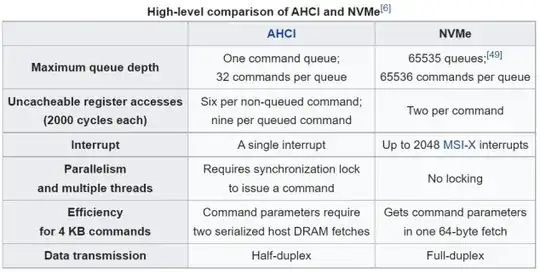I have a disk I/O intensive application where I am reading and writing a lot concurrently. For a spinning disk, it makes sense that there is contention because the pointer has to move around a lot but SSDs are supposed to be more resilient to this because of their access. However, if there is enough I/O, we could maybe saturate the controller or lane.
Is there a blog/resource/white paper that describes how reads and writes content with each in an SSD and if there is a way to see if we are close to this limit for a Linux application?
Thanks Niteya
